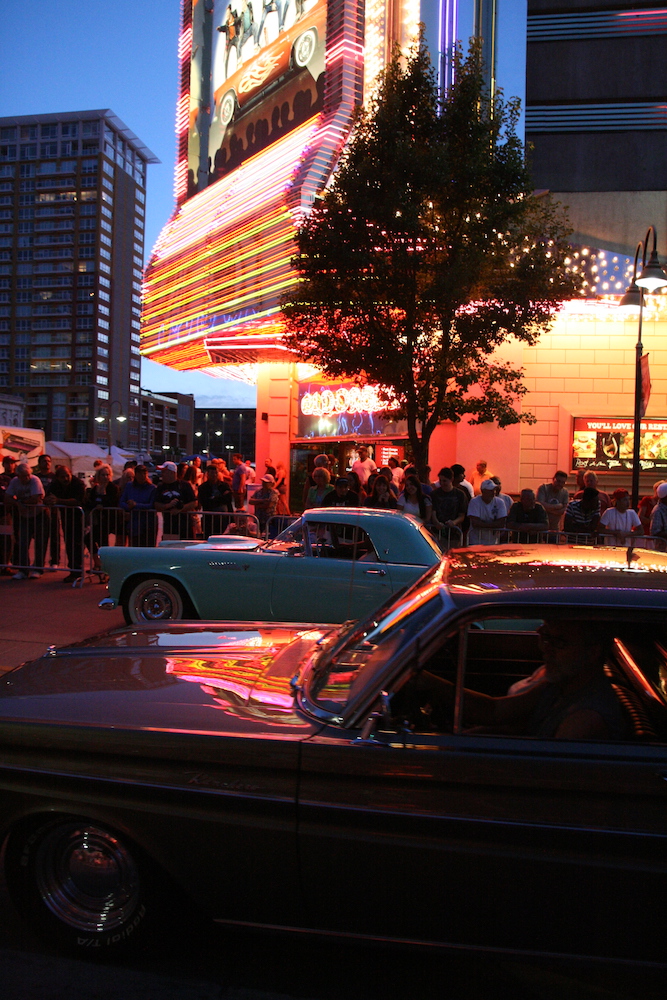Nostalgia is a vital element within the collector car world. People tend to want to collect the totems of their own youth — and demand for those items rises and falls in step with the demographics of the car world. But nostalgia within a group has a shelf life — so what happens to collector cars once nostalgia is no longer powering a market?
Whenever anyone talks about kids and cars, or a youth-driven push for cars from the 1980s or 1990s, or prices falling on cars from the 1950s, a shift in nostalgia is what they’re really talking about.
In terms of a society, I think it’s pretty hard to measure nostalgia in any meaningful way — at least other than in TV and movie popularity. That said, the car market is one place where nostalgia is quantified on a regular basis.

Every collector car auction reflects the market, but it also reflects the sentiments of the primary demographic that’s registered to bid at that moment in time. And sure, those bidders are bidding for a multitude of reasons, from rarity to performance to style. But you can’t deny that recapturing a piece of lost youth is often a factor when two bidders drive a car’s price into the sky. Everyone seems to have a story about a car that they owned, sold and want to own again — or a car from their past that they’ve always wanted and can now finally buy. I think this has been particularly true over the past 20 years or so.
But, like mentioned above, nostalgia has a shelf life. Trends come and go, and so do the experiences of any generation. Generally speaking, 40-somethings who never lived through an “American Graffiti” night don’t have much affinity for fins and whitewalls. Is a white T-bird worth less to someone who hasn’t ever seen one as anything other than a stuffy, unused collectible? Who is Suzanne Somers, anyway? That movie was made before a lot of today’s buyers were even born.
The market through the end of 2021 has been on fire, but I do think there’s a change coming, and we’ve already seen some hints at it. The types of cars that are appearing at auction are trending younger, just like the buyers and sellers themselves, and that’s changing the market in some interesting ways.
Poster cars are on the upswing. Trucks continue to be hot because they’ve always stayed relevant in their core mission. M3s are selling for prices once reserved for Alfa GTVs. At the same time, demand for 1950s classics — once a core segment of the collector car market in the United States — isn’t following along as rapidly. It hasn’t dropped off — especially not in 2021 — but it isn’t as lively as some of these newer segments.
As buyers trend younger, their coveted cars are going to shift away from the traditional market sweethearts, and that’s going to mean shifting values on those cars. That’s just the truth.

Some prices may fall on certain makes and models, but I don’t think that’s a bad thing — and I don’t think it’s going to be permanent, either.
Here’s why: Nostalgia is important, but it’s not the only factor that powers a market — and once it drops off, so too does some of the reverence that drives both high pricing as well as an owner’s need to preserve a car.
Experiences are at the core of nostalgia, and the lack of one element presents an opportunity for the other.
With that shift of nostalgia comes opportunity — opportunity for a new generation to get their hands on cars that were once out of reach to them, and the chance for that new gen to see for themselves what all the fuss was about, and to create their own memories through those experiences.
And those T-birds and ’56 Chevys? They’ve still got a lot of soul left for those who choose to experience them. There was a time when they were new cars, succeeding on their merits alone, and a new group of enthusiasts is going to find new life in them, much like their parents or grandparents did.
How do I know this? Because it’s happened before. Cars are just barely old enough to have been through this shift in demographics once already, and even the early stuff — cars that nobody alive today can remember new — are still in demand among a new generation that’s found relevance within them. Sure, their values have changed, but the cars themselves are still the same — and they still draw people back into the world in which they were built, even if they aren’t used in the same ways that they once were.
Those experiences then build a sense of nostalgia, and to some degree, we roll the clock back and start over again.
So, can classics survive without nostalgia? Sure they can. But they won’t need to. They make their own.













More Stories
Cars to Watch in Arizona
A Look Inside SEMA 2024
The Future of Muscle